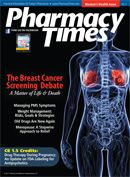Publication
Article
Pharmacy Times
Your Compounding Questions Answered
Author(s):
Q:
Several of the labels on my supplier’s bulk pharmaceutical ingredients conflict with the related material safety data sheets (MSDSs) with respect to storage temperature. They do not indicate “refrigerate” for the items that the MSDS indicates are to be stored in a cool place. Can you shed some light on this?
A:
The United States Pharmacopeia (USP) says that although a refrigerator is a cold place, not a cool place, material to be stored in a cool place may be stored in a refrigerator. This is one of those situations in which the pharmacist must use professional judgment.
If the temperature ranges are followed to the letter, according to the USP, “any temperature between 8°C and 15°C is ‘cool.’ An article for which storage in a cool place is directed may, alternatively, be stored in and distributed in a refrigerator, unless otherwise specified by the individual monograph.” Notice the operative term here is “may,” not “must”—professional judgment is needed.
Murkiness increases when one examines the USP definitions for “cold” and “controlled cold temperature.” When defining cold, the USP states, “Any temperature not exceeding 8°C is ‘cold.’ A ‘refrigerator’ is a cold place in which the temperature is maintained thermostatically between 2°C and 8°C.” On the other hand, a controlled cold temperature “allows for excursions in temperature between 0°C and 15°C that may be experienced during storage, shipping, and distribution such that the allowable calculated mean kinetic temperature is not more than 8°C. Transient spikes up to 25°C may be permitted.”
It is this last specification that allows shipping some products without cold packs. If no conclusion can be reached about this, check the introduction to the section in the USP called “Storage Under Nonspecific Conditions.” Where no conditions of storage are specified in a monograph, the default conditions are controlled room temperature (protection from excessive heat and freezing), protection from moisture, and if necessary, protection from light. Where questions remain, your education and professional judgment are your best guides. PT
Mr. Erickson is director of professional affairs at Gallipot Inc.







